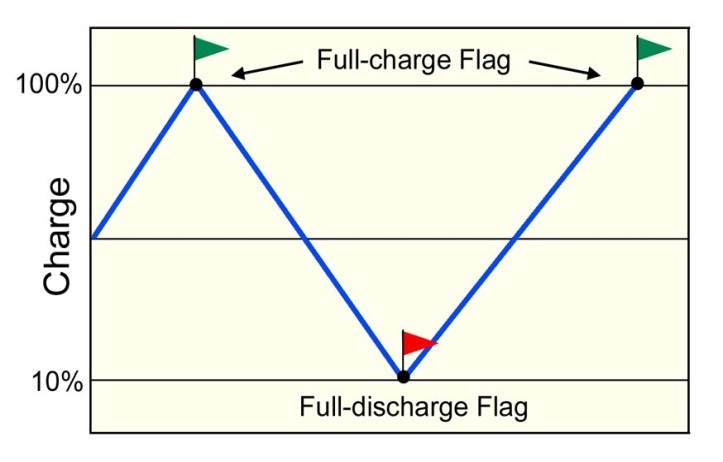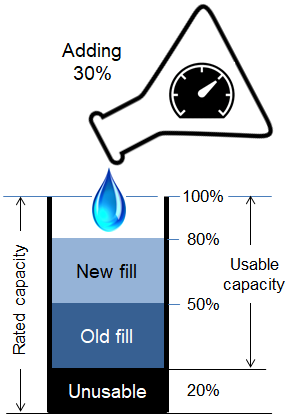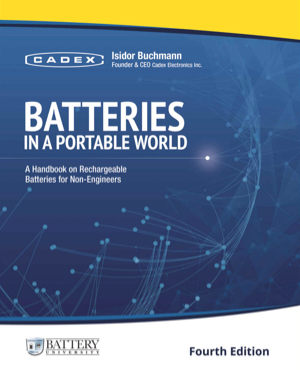The smart battery was hailed as an engineering marvel when first introduced in 1994 by Intel and Duracell. Unlike a regular battery that is being charged by the algorithm of the charger, the smart battery becomes the host controlling the charge. The smart pack also provides state-of-charge (SoC), captures performance data and detects anomalies. To enable accurate data gathering, the smart battery needs periodic calibration to correct errors that occur with normal charge and discharge cycles.
Most battery users have little patience for scheduled services and wait for the inevitable to happen that manifests in a gradual loss in accuracy of the internal fuel gauge. Meanwhile we drive EVs with a similar battery management system (BMS) that does not need calibration. Where does this leave us in terms of calibration?

In the absence of calibration, the device manufacturer advises the user to apply a periodic full discharge in the device to set the full discharge flag, followed by a full charge to set the full-charge flag. This establishes a linear line between a full and empty battery to read SoC. In time, the line gets blurred again with the need for a recalibration.
Such a calibration cycle does not address the fading capacity of the battery. A fully charged battery with a usable capacity of 50% will cut the runtime in half, reducing an hour to 30 minutes. Capacity is the leading health indicator that governs battery life.

The usable capacity in a SMBus battery is represented by Full Charge Capacity (FCC). When new, FCC is 100%. The number decreases as the battery ages.
A modern Smart battery with impedance tracking periodically updates the usable capacity during normal use. Capacity updates occur when the fuel gauge is able to observe a significant change in SoC while measuring the energy flowing into or out of the battery. Impedance updates generally required a learning cycle.
Our analogy illustrates a battery in the form of a glass with 20% unusable capacity, 30% old fill and a 30% measured new fill. Attaining a SoC of 80% enables the calculation of the usable capacity that is the sum of residual charge plus the energy added. The formula also applies in reverse by measuring the discharging energy.
SoC is determined by measuring voltage and temperature when the battery is in a rested state in which the voltage has settled after agitation caused by charge and discharge. Internal tables store the relationship between SoC, voltage and temperature.
The modern smart battery updates its estimated capacity whenever it has the opportunity during charge or while being discharged for an undisturbed time, followed by a sufficiently long rest period to capture valid SoC readings by voltage. Best results are achieved by applying a deliberate full cycle with manufacturer’s specified learning algorithm, a service that can take 24 hours and can be done with a battery analyzer. Similar learning procedures are also recommended for the EV by allowing the vehicle to rest for a few hours at various SoC levels before charge. The smart battery is indeed smart but the reading can still be off by 10–20%.

